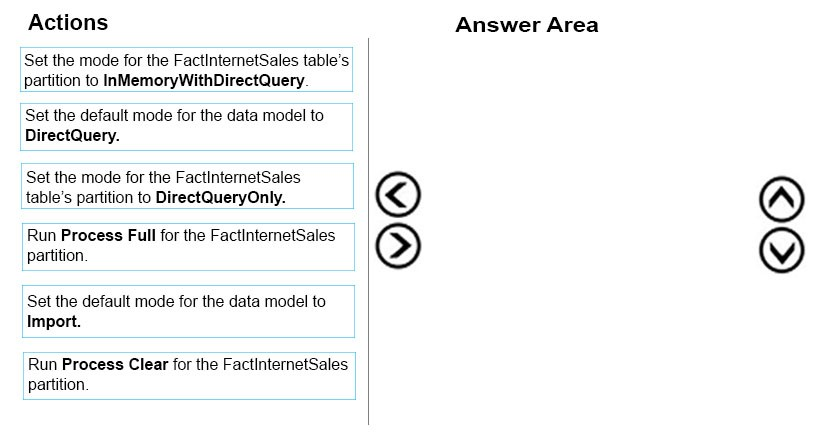

DRAG DROP -
Case Study #3 -
This is a case study. Case studies are not limited separately. You can use as much exam time as you would like to complete each case. However, there may be additional case studies and sections on this exam. You must manage your time to ensure that you are able to complete all questions included on this exam in the time provided.
To answer the questions included in a case study, you will need to reference information that is provided in the case study. Case studies might contain exhibits and other resources that provide more information about the scenario that is described in the case study. Each question is independent of the other question on this case study.
At the end of this case study, a review screen will appear. This screen allows you to review your answers and to make changes before you move to the next sections of the exam. After you begin a new section, you cannot return to this section.
To start the case study -
To display the first question on this case study, click the Next button. Use the buttons in the left pane to explore the content of the case study before you answer the questions. Clicking these buttons displays information such as business requirements, existing environment, and problem statements. If the case study has an
All Information tab, note that the information displayed is identical to the information displayed on the subsequent tabs. When you are ready to answer a question, click the Question button to return to the question.
Background -
You are a developer for a Seattle-based company. The company is expanding globally. Many company employees speak fluent Mandarin and read Simplified
Chinese.
You have six tabular data models that are deployed to two instances of Microsoft SQL Server Analysis Services (SSAS).
Users report that the query takes a long time to complete.
You are planning the disk space allocations for a new Microsoft SQL Server Analysis Services deployment. You plan to move several relational data file databases to the new SSAS instance. The databases require a total of 10 GB of disk space.
You also plan to deploy Cubes and Aggregations and use Object Processing. Cubes will have small fact tables and few dimension members. No unnecessary aggregations will be created. You plan to process an entire cube in a single transaction.
Data Models -
One of the data models is named CustomerSales. This data model contains eight tables. The model includes a table named Sales that defines several measures, including a measure named PriorYearSales. The PriorYearSales measure is referenced by other measures, and is not intended to be analyzed directly by users.
You must translate the metadata for all fata the CustomerSales data model to Simplifies Chinese. Team members from the Shanghai office assist with identifying appropriate translations.
A data model named OrderAnalysis is deployed to one of the SSAS instances. Order data is loaded into the OrderAnalysis data as part of an overnight process.
You observe that the model is not up-to-date.
The business analysis team uses a variety of client applications to issue MDX queries against OrderAnalysis. Order data must be completely up-to-date.
The OrderAnalysis model has two user-defined hierarchies that are defined in a table named Order. New customers are only added once per day. The overnight process is sufficiently up-to-date for the Customer data to provide optimal performance while achieving the data currency goals whenever possible.
Databases -
You deploy a database named DB1 to an SSAS instance as a project by using SQL Server Data Tools. Data analysts report that they cannot access near real time data from the SSAS SalesAnalysis model from DB1. You discover that the project has been deployed with the Direct Query Mode option set to OFF.
Most queries that use the SalesAnalysis data model use data from a table named FactInternetSales that is 20 gigabyte (GB) in size. Cached data must be available for the FactInternetSales table. All queries accessing the SalesAnalysis model must be executed in near real time.
A database named DB2 uses the InMemory query mode. Users frequently run the following query:
You need to reconfigure the SSAS instance that hosts DB1.
Which three actions should perform in sequence? To answer, move the appropriate actions from the list of actions to the answer area and arrange them in the correct order.
Select and Place:

Luzix
4 years, 9 months agoals2kool
5 years, 2 months agoCYRUSD
5 years, 1 month agoAnette
5 years agoeceb
4 years, 10 months ago